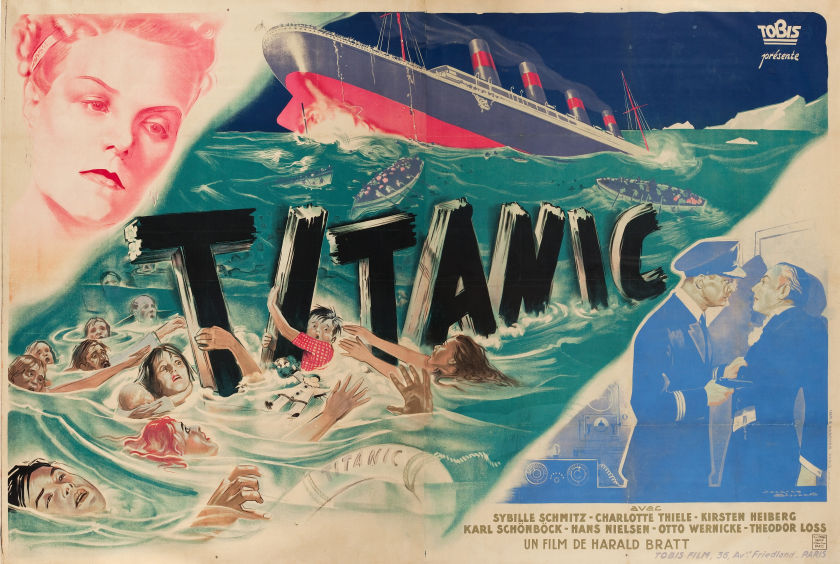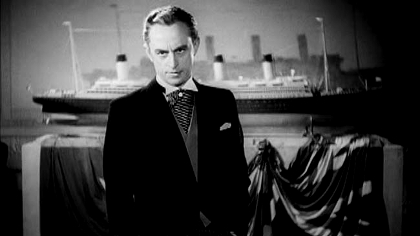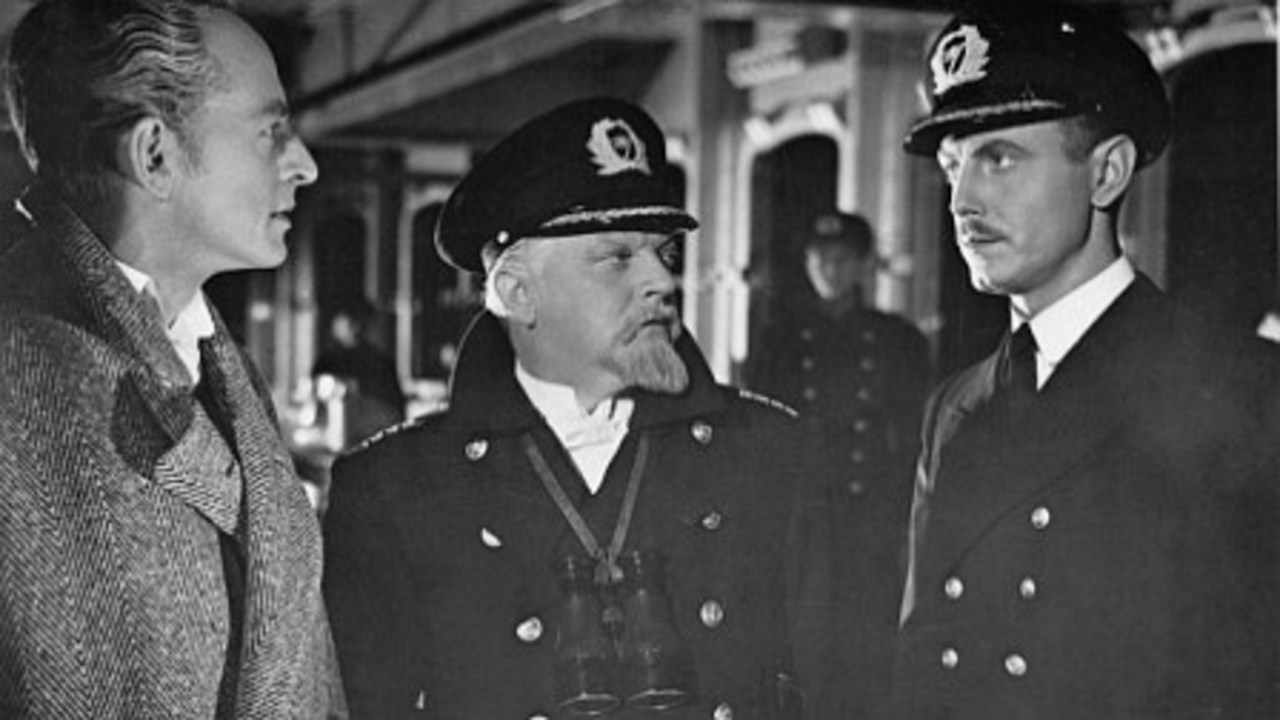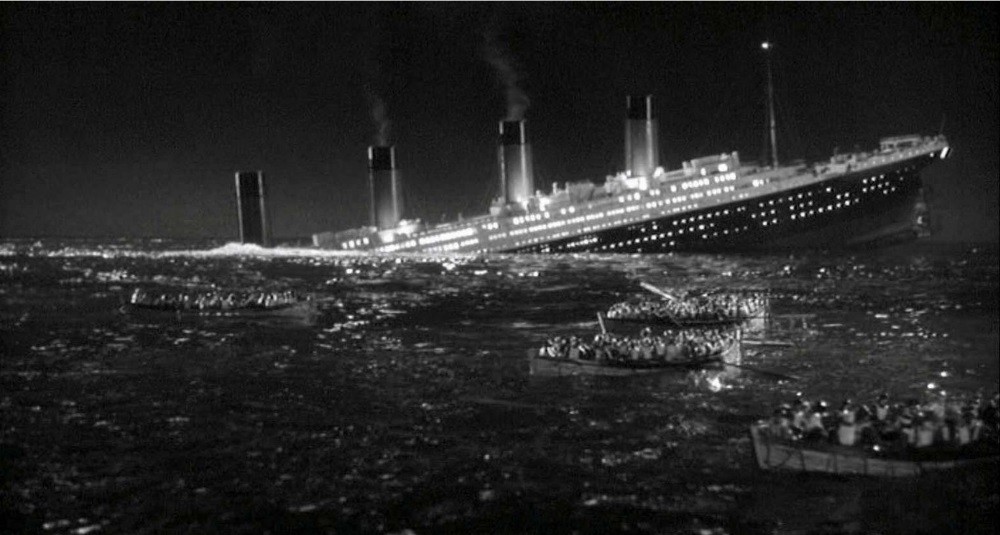There have been many depictions of the world’s most famous shipwreck, from such classics as A Night to Remember to less than stellar entries such as an animated version featuring a heroic sailor mouse and a giant octopus – Don’t believe me? Check out The Legend of the Titanic (1999) – but today we will look back at the first feature-length representation of this tragic tale, a version that came out of all places, Nazi Germany.
In 1943 Nazi Propaganda Minister Joseph Goebbels commissioned a movie that would not only show the superiority of German filmmaking but also highlight the dangers of capitalism, and with this mindset, Titanic or "In Nacht und Eis" as it's known in German, would portray the sinking of the Titanic as a metaphor for the downfall of the British Empire, with the one German crewmember acting heroically and displaying the superiority of the German people. The plot of this film is of the highest melodrama possible with it opening on a White Star Line shareholders meeting where they learn that the company’s stock is plummeting rapidly, but the president of the Line, J. Bruce Ismay (E.F. Fürbringer) is unfazed by this and he promises the Board of Directors to reveal a secret during the maiden voyage of the line's newest ship, RMS Titanic, laying out his plan to manipulate the stock by selling short their own stock in order to repurchase it at a lower price, just before the news about the ship's record speed would be revealed to the press. It should be noted, that Bruce Ismay is treated unfairly in pretty much all depictions of the Titanic story, but in this film, he is a complete evil asshat.
Bruce Ismay, an evil capitalist swine.
But Ismay is not the only villain in our midst, billionaire John Jacob Astor (Karl Schönböck) is secretly working against this plan as he hopes to gain controlling interest in the White Star Line by keeping the stock plummeting so that he can buy up 51% of the stock when the time is right. It’s at this point you may be wondering if you are actually watching a movie about the sinking of the Titanic and not some Wall Street white-collar crime drama, but the sinking does eventually become a major plot at around the 47-minute mark – it's sinking will definitely affect those stock prices – sadly, any similarities to the actual events of that fateful night can be considered almost accidental. Not only do we have Bruce Ismay acting like a moustache-twirling villain, bribing Captain Smith (Otto Wernicke) with a $5,000 dollar bonus if they arrive in New York on schedule and an additional $1,000 for every hour ahead of schedule, but Smith himself is depicted as a weak and ineffectual buffoon who after they hit the iceberg has the crew explain to the passengers that they’ve stopped to maneuver around the icebergs and then later ordering people to the boat decks for a supposed lifeboat drill.
If made today they’d have cast Leslie Nielsen as Smith.
As mentioned, there is one sensible crewmember aboard the Titanic and that would be 1st Officer Peterson (Hans Nielsen), who valiantly tries to get Captain Smith to slow down, even going so far as to approach rich passengers in the hope that they could influence Ismay into ordering Smith to act like an actual captain and not an idiot, needless to say, none of that works out and the ship does bump into an iceberg and starts to sink. While the film is well-made and visually impressive the heavy-handed propaganda is as laughable as it is bad, with Peterson representing the ideal German and the British as a money-grubbing capitalist who put money above everything, even love. This narrative reinforces the nationalist and xenophobic beliefs of the Nazi regime and undermines the factual basis of the tragedy.
Jacob Astor, proof that Americans are just as bad as the Brits.
Stray Observations:
• This is the second German production dealing with the sinking of the Titanic, their first attempt was a 35-minute silent film called In Nacht und Eis which was released a mere four weeks after the actual sinking.
• The elaborate sets and scenes shot aboard the ship Cap Arcona bear little resemblance to that of the Titanic, which didn’t have a huge ballroom or outdoor tennis court as seen in this film.
• The stock manipulation effort that was central to this movie's plot would not have been possible as the White Star Line had been a wholly owned subsidiary of JP Morgan's International Mercantile Marine consortium from 1902 till 1932.
• This film, like many others, shows smoke coming from all four of Titanic’s funnels, but the real Titanic only used three funnels, the fourth being false.
• At one point in the film, two men who were locked in the “brig” for theft and then have to be broken out when the ship starts sinking, which is a plot point similar to one found in James Cameron’s Titanic.
• The 1958 British film, A Night to Remember, borrowed footage from this film and some of it does look fantastic.
So at least something good came out of this movie.
Despite these issues, the film does have some cinematic merit as the set design and special effects are remarkable, and the scenes depicting the sinking of the Titanic are both thrilling and devastating and they carry the proper emotional wallop that this devasting event really deserves. However, these technical achievements are overshadowed by the film's propaganda and historical inaccuracies and I can see this putting some, if not most viewers, a little off.
Note: film's production was also marred by conflict and controversy. The film's director, Herbert Selpin, was arrested and later found dead in his cell under suspicious circumstances after he criticized the Nazi leadership during the filming process. And people say film critics are harsh.






No comments:
Post a Comment